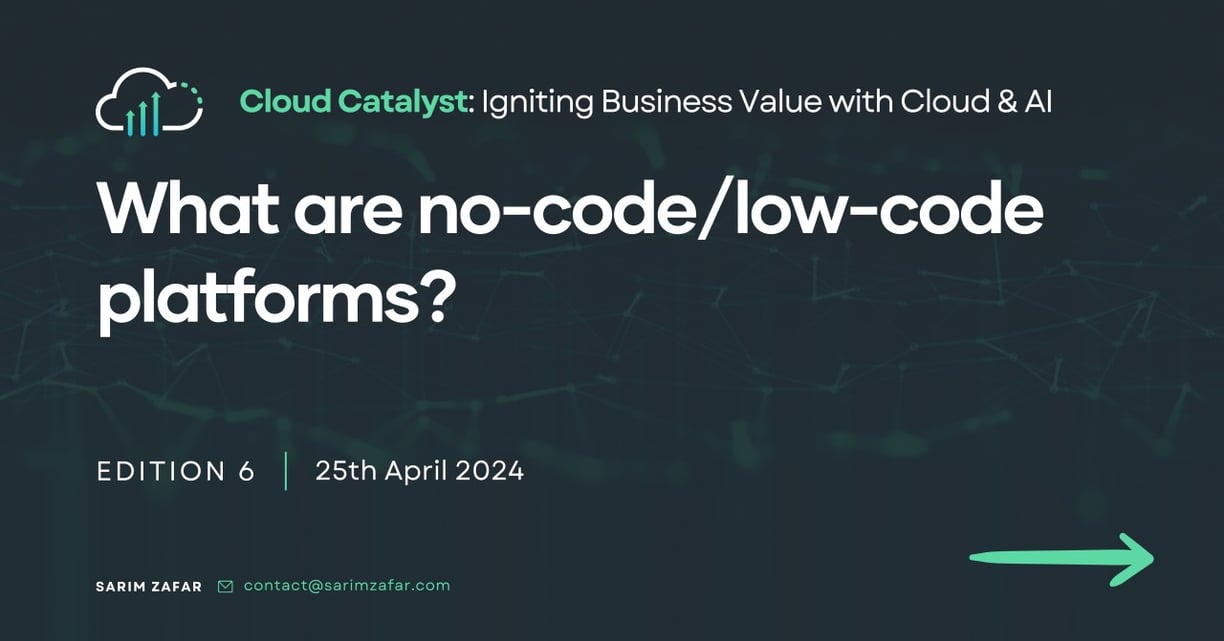What are no-code and low-code platforms?


Software development and website coding can be a complex process. As such, businesses should explore different methods for shortening their time-to-market and achieving efficient operations.
Although the most successful companies are finding ways to use AI technology in their development cycles, many devs are still sticking to their guns, insisting on working completely manually. However, AI can exponentially lead to a faster and more precise development process, thereby saving the company money and time while also improving the quality of the final product.
Definition of low-code and no-code development
As the name suggests, low-code and no-code development platforms are tools and environments that allow both devs and those who are not to create new applications with minimal coding skills. Put differently, using this software requires no knowledge of programming languages or machine code.
Generally, they work on a drag-and-drop basis, making it super easy to generate full web or mobile apps by linking various components together.
The “target audience” of these platforms can be small business owners and other professionals with no expertise in creating and testing applications. However, this modular approach can also benefit developers looking to build applications quickly without doing any line-by-line coding.
What are some popular no-code and low-code platforms?
To paint a clearer picture of how these platforms can assist business owners and development teams, here are some of the most popular solutions in the market:
Even though it’s primarily a low-code development platform, Mendix is a sort of a triple threat as it also provides users with easy workflow automation and legacy system modernization.
Plus, using it is very easy as it employs an AI assistant that aids development and empowers those with minimal understanding of coding to develop sophisticated applications.
Mendix also supports Agile frameworks, comes with a slew of project management features for collaborative development, and has plenty of pre-built integrations for Microsoft Azure, AWS, Google Cloud, and IBM Cloud.
As opposed to Mendix which requires some skill to develop, Bubble is a straightforward, visual no-code platform that allows beginners to create a functioning app without understanding the inner workings. At first glance, this may seem limiting, but the visual programming language used provides the flexibility and freedom to create virtually anything.
Users have control over the data structure, performance, and look of the app.
As such, Bubble is perfect not only for newbies but also veteran developers who want to put together a working prototype quickly or a complete product.
It’s also worth pointing out Bubble’s wide array of integrations with other apps and plenty of pre-made workflows, making it easy to start your first development project.
Aptly named Bildr is a low-code platform aimed at the production of Chrome extensions, web apps, and Web 3 applications.
The biggest advantage of this solution is its purely visual workflow. It provides a simple user interface that allows you to see different screens, pages, and patterns on a single canvas. As a result, users can structure complex aspects of the app such as user flow by arranging elements on the screen. This includes elements like toggle switches, form containers, and rich-text editors, to name a few.
Since all the connected events, data, styling, and properties are fully customizable, seasoned software developers can use Bildr without fear of reaching roadblocks and limitations.
Is low-code the future?
It’s no secret that the digital world is moving at a rapid pace. So, the agility that low and no-code platforms offer a game-changer for organizations looking to boost or maintain their competitive edge.
Regarding industry-wide repercussions, the larger adoption of these easy-to-use tools will usher in an era where development will be a lot more accessible.
There is also a realistic possibility that the faster pace of development will influence customer and client expectations, forcing organizations to embrace no-code platforms (at least, to an extent) to be able to keep up with the demand - similar to how website builders such as WordPress and Wix forced web designers to experiment with different approaches.
Either way, finding ways to implement these platforms is a one-way ticket to achieving more streamlined operations and saving development funds, making the long-term benefits hard to ignore.
About Me



